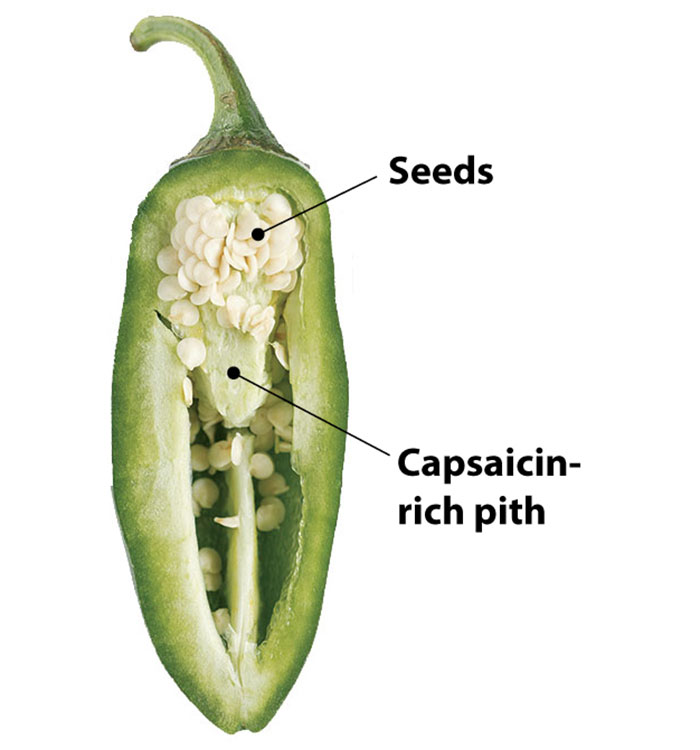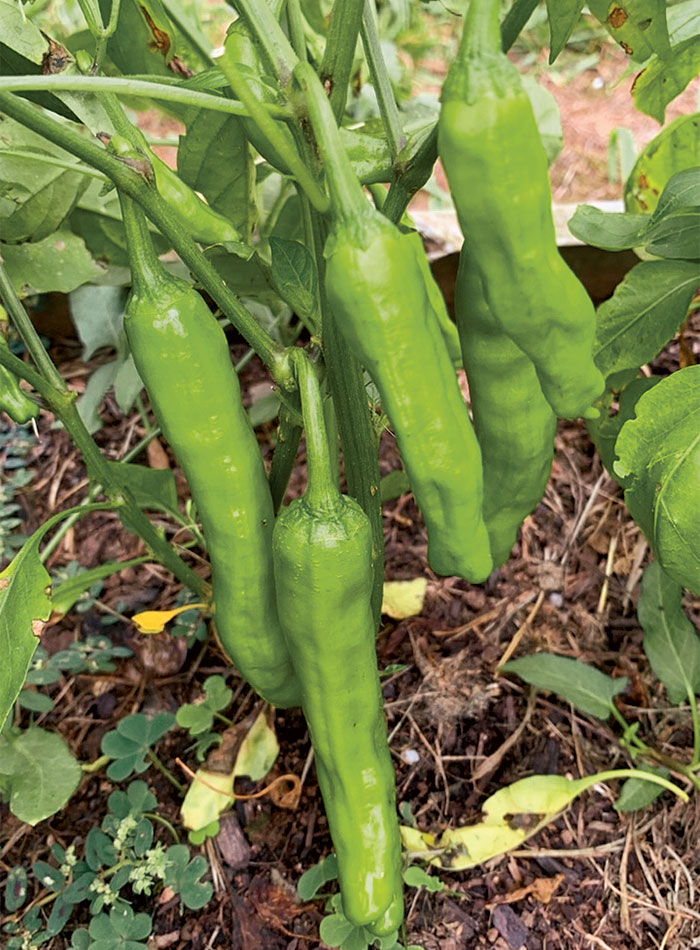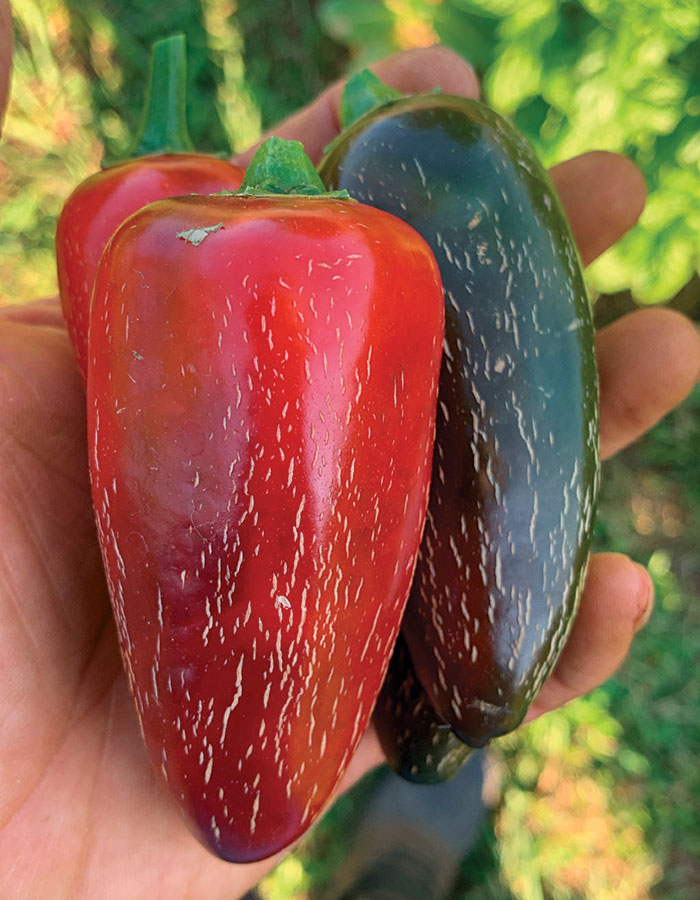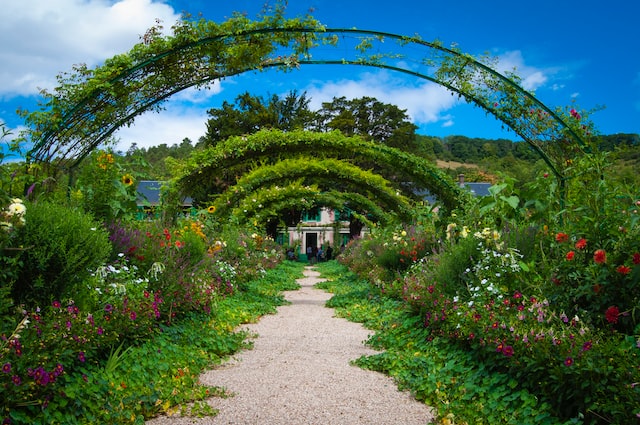Who wouldn’t want to add a little more spice to their life? When it comes to growing edible peppers, he’s one of the easiest and tastiest options to add to your menu. If that wasn’t enough, the fruit is beautiful and comes in many different shades of green, red, orange and yellow. These carefully packaged, flavorful pops have been a staple in my home garden, as well as his CSA lot I’ve been tending to for clients over the past years. . There are so many types of peppers that it is difficult to choose. Over the years, I’ve listed my favorites below in the mild, medium, and hot categories.
Mild Peppers: Flavorful Fruit with Little Pungency
“Jimmy Nardello”
Scoville thermal unit: 0
Days to germination: 7 to 10
Days to maturity: 80-90 years after transplantation
plant size: 24 inches tall and 18 inches wide.
‘Jimmy Nardero’ is an impressive chili pepper brought to the United States from Italy by the Nardero family in 1887. Thin, elongated, red peppers are packed with flavor and can grow from 6 to 12 inches long. ‘Jiminaldello’ is one of the most versatile peppers on this list, as it can be fried or grilled, as well as eaten raw in salads. Dried and ground, it makes a wonderful paprika.
“Corno di Toro Rosso”
Scoville thermal unit: 0 to 500
Days to germination: 7 to 10
Days to maturity: 75-95 years after transplantation
plant size: 24 to 36 inches in height and width
“Corno di Toro Rosso” is also an excellent Italian pepper. Its name means “red bull’s horn”. A sweet heirloom pepper with a hint of heat, it is a staple in many Italian kitchens. The fruits are bright red and 8 to 12 inches long. A very versatile pepper, it is perfect raw, stuffed or grilled.
“Shishitou”
Scoville thermal unit: 100 to 1,000
Days to germination: 10-14
Days to maturity: 75-95 years after transplantation
plant size: 24 inches tall and 18 inches wide.
“Shishito” is a popular Japanese pepper, and its name translates as “lion-headed pepper”. The small, wrinkled, bright green, flavor-packed 3-inch-long berries turn red when fully ripe. The taste of this pepper can be described as sweet and slightly spicy. It’s often used in tempura and other traditional Japanese dishes, but can also be eaten raw in salads or on the grill.
Moderate Chili Peppers: A Level Up in Hotness
“Red Cherry Hot”

Scoville thermal unit: 3,000 to 5,000
Days to germination: 10-21
Days to maturity: 75-85 years after transplant
plant size: 24″ to 30″ tall and 24″ wide.
This small, red, round and slightly flat pepper got its name because of its resemblance to a cherry in appearance. The fruit is about 1-1/2 to 2 inches in diameter. In terms of spiciness, “Red Cherry Hot” is right behind jalapeno peppers. It can be prepared in many ways: fried, decorated, stuffed. Also, because of its thick skin, this pepper is perfect for pickling.
“Halafuego”
Scoville thermal unit: 4,000-6,000
Days to germination: 10-15
Days to maturity: 80-90 years after transplantation
plant size: 18-36 inches tall and 12-24 inches wide.
Jalapeno peppers are native to Mexico and are one of the most popular pepper types in the world. It is said to be moderately spicy and is essential in salsa recipes. Pods are typically 2-3 inches long, but can be larger. Recently, new jalapeños have been developed that are larger and sometimes spicier. One example is the “halafuego”. Considered to be an improved version of the original jalapeño, the ‘jalapeno’ plant is a high-yielding plant with 3.5 to 4 inch long fruit. These large fruits are great for stuffing. But this pepper is versatile enough to be dried, smoked, and used in salsas.
“Poblano”

Scoville thermal unit: 1,000 to 1,500
Days to germination: 8-12
Days to maturity: 75-95 years after transplantation
plant size: 24-30 inches tall and 12-24 inches wide.
The ‘poblano’ pepper originated in the state of Puebla, Mexico and is a popular ingredient in many Mexican and Southwestern dishes. The fruit grows about 3 to 6 inches long and is dark green with thick walls. Dried poblano peppers are called anchos. This pepper has a rich, earthy flavor with a touch of sweetness that makes it perfect for tacos, enchiladas, and burritos.
Hot Pepper: Unparalleled Intense Hotness
“Scotch Bonnet”

Scoville thermal unit: 100,000 to 350,000
Days to germination: 7 to 21
Days to maturity: 90-100 from transplant
plant size: 24-36 inches tall and 18-24 inches wide.
The place of origin of “Scotch Bonnet” is the Amazon basin. It has become synonymous with the Caribbean because it has become a staple in many cuisines of the Caribbean region. The most common use is Jamaican jerk sauce, which can be used with chicken, goat, and pork. The pepper is said to be very tasty and sweet with notes of tomatoes, cherries and apples. Pods are circular and about 1.5 to 2 inches in diameter.
“Sweet Cayenne”

Scoville thermal unit: 30,000 to 50,000
Days to germination: 10-15
Days to maturity: 70-93 years after transplantation
plant size: 18 to 24 inches in height and width
Cayenne pepper is one of the most popular varieties of chili pepper in the world and is believed to have originated in French Guiana, the smallest country in mainland South America. The bright red berries are usually 3 to 5 inches long and are extremely versatile and can be used in almost any dish. Pairs great with eggs, poultry, seafood, cheese, tacos, curries, hot sauces and many other foods. The pods can be dried and ground into a powder. Like jalapeno peppers, cayenne peppers have been modified for specific purposes. The ‘Sweet Cayenne’ pepper is one of many recently developed varieties and is perfect for adding to stir-fries. It looks and feels just like the original cayenne pepper, but it’s less spicy.
“Trinidad Morga Scorpion”
Scoville thermal unit: 1,200,000 to 2,000,000
Days to germination: 10-15
Days to maturity: 90-100 from transplant
plant size: 36-48 inches tall and 18-24 inches wide.
The ‘Trinidad Morga Scorpion’ pepper, known simply as Morga Scorpion, originates from the small seaside village of Morga in Trinidad. It once had a reputation as the world’s hottest pepper, surpassed only by the ‘Carolina Reaper’. This pepper is certainly spicy, but is revered by Trinidadian locals for its fruity, sweet flavor. Pepper is used to add authentic spiciness to popular Trinidadian dishes such as callaloo, a delicious combination of dashi, okra, carrots, pumpkin, coconut milk and fresh herbs. Many Trinidadians combine morgus scorpions in a food processor with garlic, lemon, vinegar, salt and chadon red to create a flavorful hot sauce.
Chili peppers are often loved or feared. But where does heat come from?


The answer is capsaicin, a compound found in chili peppers. Capsaicin is responsible for the burning sensation you feel when you eat chili peppers. This compound is measured in Scoville Heat Units (SHU). The Scoville Scale was created by Wilbur Scoville in 1912 and ranges from 0 (green pepper) to over 1,500,000 (the “Carolina Reaper”).
The membrane around the seed of a chili pepper, or the pith, contains the highest amount of capsaicin. Removing the pith and seeds before eating reduces the strength somewhat. To protect yourself when cutting peppers, wear protective gloves, avoid touching any part of your body (especially your face), and wash your hands thoroughly after handling and discarding the seeds.
Keegan Clifford is a lifelong gardener who grows beautiful crops in the garden of his home in Middletown, Maryland.
Photographs (unless otherwise noted): Courtesy of Keegan Clifford.
Seed source:
- Baker Creek Heirloom SeedsMansfield, Missouri, 417-924-8917, Rare Seeds.com
- Botanical Interest BloomfieldColorado, 877-821-4340, botanicalinterests.com
- true leaf marketSalt Lake City, Utah, 801-491-8700, trueleafmarket.com







